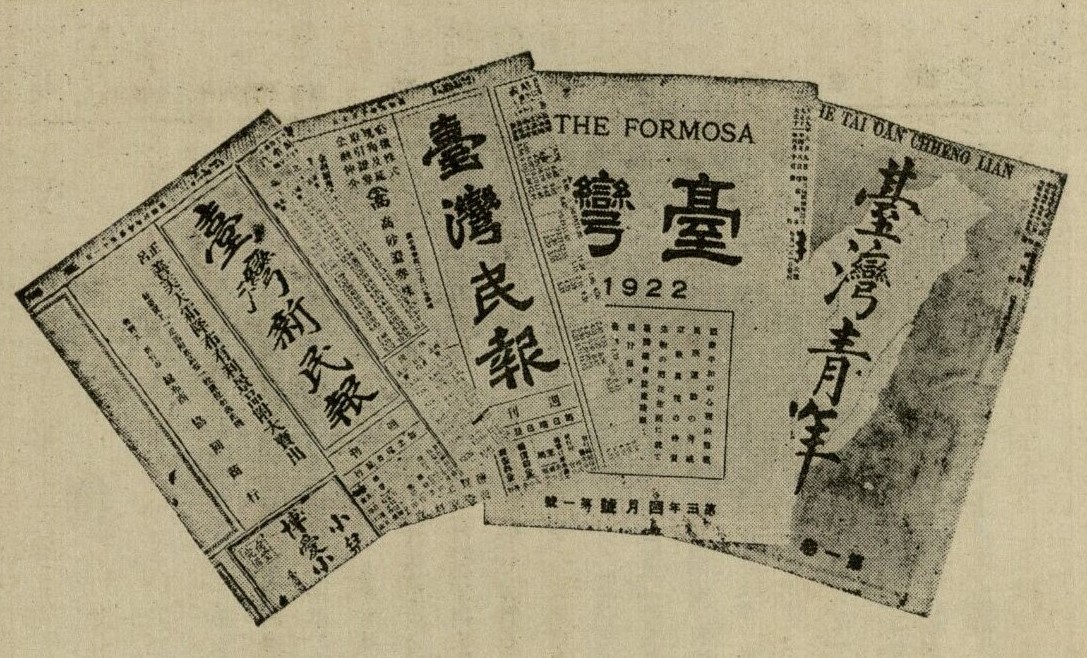|
The changes in the external format of the newspaper, including the number of issues, the size and number of pages as well as the language use reflected the changing times and political situation. First, The Taiwan Minpao, The Taiwan Shinminpo, and the subsequent Kounan Shinbun (Kounan News), published between April 1923 and March 1944, each had its own issue numbers but in serial, meaning that the three made up a newspaper series over the two decades. In term of page size, The Taiwan Shinminpo daily measured 42 x 59 cm (roughly an A2), which is similar in size to today’s newspaper. In earlier times when published overseas as fortnightly, 10-day and weekly editions, the newspaper measured 24 x 17.5 cm (roughly a B2) with content layout similar to that of a magazine. In 1927 when it was published in Taiwan, the page size was doubled and changed to an octavo format, approximately 27 x 39 cm (slightly smaller than an A3), with layout resembling that of the subsequent daily edition. As for number of pages, many changes had occurred over the years from its first publication as a morning daily in April 1932 and with the evening edition added two years later in 1934. In principle, the morning and evening editions of The Taiwan Shinminpo contained a total of 10-12 pages; and on Mondays, only the morning edition was printed. That was the time during the Japanese colonial era when Sunday was promulgated as a holiday. In consideration of the manpower involved, only the morning edition was printed on Monday. Moreover, the so-called evening edition is not what is understood today. It contained mainly the news of the previous day and was distributed together with the morning edition. Owing to war mobilization and the subsequent reduction in material supply, Japan’s Ministry of Commerce and Industry issued an order in 1939 for rationing the paper supply for newsprint. From September 1939, the morning edition of Monday was cut to 4 pages only, and by the end of the war, the total number of pages each day reduced sharply to 2-4 pages (see details in Table 1). In order to cover as much as possible in the limited pages, the layout became more packed, with each page covering more than 40 news items.
The number of pages published each day followed roughly as specified in Table 1. In case of sudden outbreak of major events, supplementary information to be supplied and bonus offered for readers, there would be extra pages inserted, special edition printed, appendices and coupons attached. In addition, two times each year, extra pages were issued. One was on January 1, New Year’s Day, with the total number of pages printed even exceeding 20. Besides reporting in great length updates of the royal family, it published New Year’s greetings from Japan’s prime minister and important cabinet officials, Taiwan’s governor-general, military commander and officials as well as private individuals and companies. The other was on April 29, the Emperor’s Birthday, with additional pages for relevant news and congratulatory advertisements. These additions reflected Japan’s respect and love for its emperor. (Figure 1)
Figure 1 Every year, the front page of the New Year’s Day issue featured photos of the emperor and his wife along with congratulatory messages from important cabinet ministers. This front page of the January 1 issue of 1941 carried congratulatory messages from officials including the then Prime Minister Fummaro Konoe, Army Minister Hideki Tojo, and Governor-General of Taiwan Kiyoshi Hasegawa. Source: The Taiwan Shinminpo No. 3569 (1941-01-01), Records of the Taiwan Shinminpo (T1119_02_109_0001).
Regarding language use, The Taiwan Shinminpo, upon becoming a daily, was a bilingual Chinese-Japanese edition, with the front page in Chinese and equal number of pages in the two languages. However, as the war atmosphere intensified and in line with the national kōminka (Japanization) policy, the Chinese pages were banned in April 1937 and the newspaper was published in Japanese only. Of note is that some of the kanji (logographic Chinese characters) used at that time differed from the contemporary kanji but resembled today’s traditional Chinese. Examples of such included 「經歷」(meaning experience) instead of「経歴」, 「醫學」 (meaning medicine) instead of 「医学」,「選擧」(meaning election) instead of 「選挙」, and「體制」(meaning system) instead of「体制」currently used in Japan. This is because the kanji used before the war followed the fonts of the Kangxi Dictionary. After the war, the tōyō kanji (list of kanji for general use) was successively promulgated, which became the standard kanji font for daily use in Japan today. |
 |




